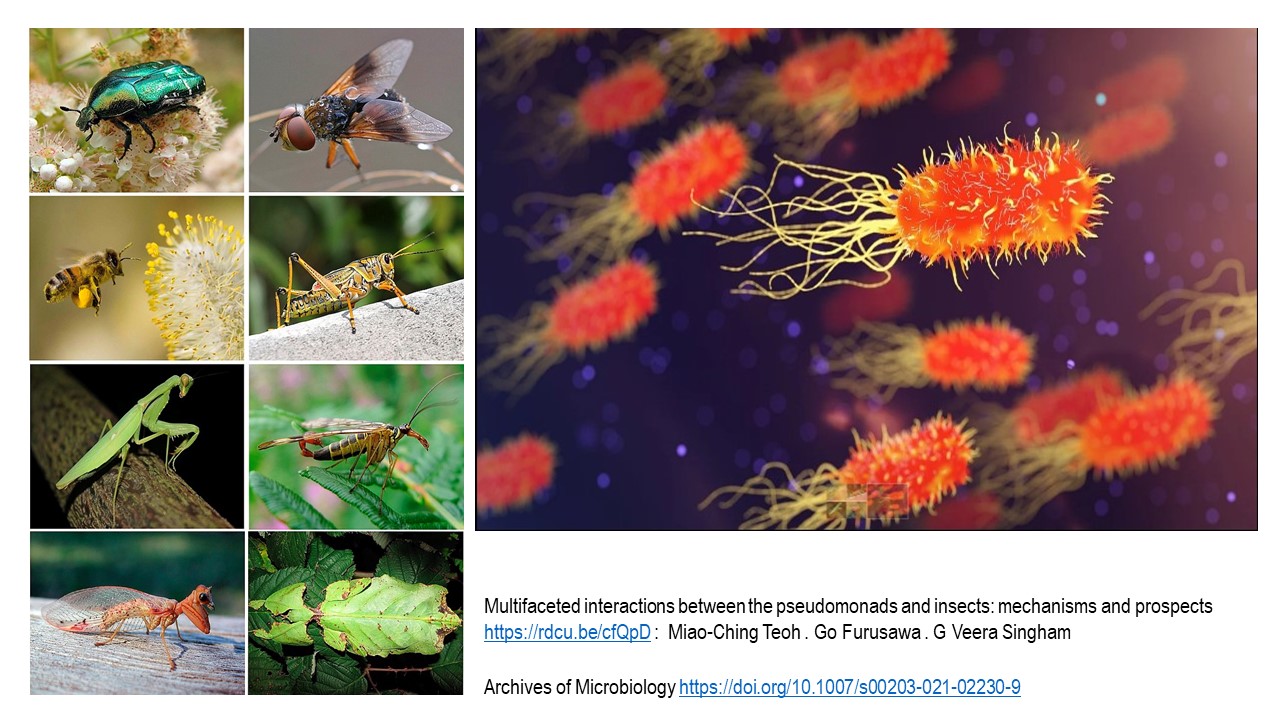Multifaceted interactions between the pseudomonads and insects: mechanisms and prospects
Miao‑Ching Teoh1· Go Furusawa1· G. Veera Singham1
Insects and bacteria are the most widespread groups of organisms found in nearly all habitats on earth, establishing diverse interactions that encompass the entire range of possible symbiotic associations from strict parasitism to obligate mutualism. The complexity of their interactions is instrumental in shaping the roles of insects in the environment, meanwhile ensuring the survival and persistence of the associated bacteria. This review provides detailed insight into the multifaceted symbiosis between one of the most versatile bacterial genera, Pseudomonas (Gammaproteobacteria: Pseudomonadaceae) and a diverse group of insect species. The Pseudomonas engages varied interactions with insects, being either a pathogen or beneficial endosymbiont, as well as using insects as vectors. Additionally, updates on existing and potential applications of Pseudomonas and their numerous insecticidal metabolites as biocontrol agents against pest insects are provided for the improvement of integrated pest management strategies. Here, we have summarized several known modes of action and the virulence factors of entomopathogenic Pseudomonas strains essential for their pathogenicity against insects. Meanwhile, the beneficial interactions between pseudomonads and insects are currently limited to a few known insect taxa, despite numerous studies reporting identification of pseudomonads in the guts and haemocoel of various insect species. The vector–symbiont association between pseudomonads and insects can be diverse from strict phoresy to a role switch from commensalism to parasitism following a dose-dependent response. Overall, the pseudomonads appeared to have evolved independently to be either exclusively pathogenic or beneficial towards insects.

Archives of Microbiology https://doi.org/10.1007/s00203-021-02230-9
Full Link: https://rdcu.be/cfQpD
Received: 14 August 2020 / Revised: 19 December 2020 / Accepted: Published: 11 February 2021 © The Author(s), under exclusive licence to Springer-Verlag GmbH, DE part of Springer Nature 2021
CCB Ref: 2021_RH_1_vs
Date: 16/03/2021
- Hits: 382